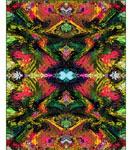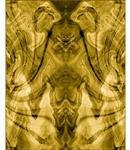Dyslexia is a chronic reading problem that affects millions of people. It’s actually a somewhat common learning difficulty, and affects a large percentage of those of us labeled “learning disabled.” People with dyslexia may have trouble with reading, writing, spelling, math and sometimes music. And boys with dyslexia outnumber girls with the learning disability three to one.
I am dyslexic. For me it has been, at times, a liability and an asset, an obstacle and a tool, a frustration and an inspiration. In short, it has been an inspiration.
Even before I knew what dyslexia was or that I was one of the 10 million Americans who have the learning disability, it was already helping to shape my personality, my character, and my view of the world.
Most people think dyslexia is a condition that involves reading from right to left and reversing words and letters. While some people with dyslexia do have these problems, and it’s certainly one way the learning disability has manifested in me, they’re not the most common characteristics of dyslexia. Simply put, dyslexic brains are wired differently, making it difficult for us to break the letters of written words into distinct sounds (or phonemes), a capability called phonologic awareness.
I prefer to describe people with dyslexia as visual, multidimensional thinkers who are intuitive, highly creative, and excel at hands-on learning. Many dyslexic people shine in the arts, creativity, design, computing and lateral thinking. These things are all true in my case.

Windswept dreams
Unfortunately, when I was growing up and trying to make my way through the public school systems, dyslexia awareness was not as high among educators and parents as it is today. Dyslexia can occur at any level of intellectual ability. Sometimes children with dyslexia appear to their teachers and parents to lack motivation or not to be trying hard enough. My teachers told my parents that I had a “communication problem.” At a very early age, even I knew that something was different about me, but I didn’t fully understand what it was and I didn’t know it had a scientific name and definition.
At my best, I was directionally impaired. At my worst, I had difficulty learning to read, write, do math, tie my shoes and tell time. As a young student, I learned the hard way that there’s a big difference between the sentences, “He saw a dog,” and “He was a god.” But a classroom full of laughing second graders can be highly motivating. I didn’t learn anything about dyslexia that day, but I learned a little bit about the world and the people in it, and I learned a lot about myself - mainly that I could find the humor in what was happening to me. Later, I learned that I’m not easily defeated, that I have unlimited determination and that I my innate problem-solving skills are highly evolved.
The system was not equipped to help me cope or to even identify my learning disability. Coping I did on my own, and identifying my “problem” didn’t happen for many years. I had to problem-solve my way through most of my early years. This meant I would either fall behind or I would have to learn to educate myself because traditional methods of teaching did not always work for me. Falling behind was not an option, so I learned to educate myself when I needed to. Some things came easier than others did as I navigated the choppy waters of public education undetected.
As difficult as learning to do some things was, it seemed to be counterbalanced by a proclivity for art and technology and (because of my directional impairment, I think) a fascination with symmetry. The love of these three things and a medical exam took me on the creative journey of a lifetime.
Seeking treatment for completely unrelated migraine headaches included a trip to see a neurologist. During a routine exam, he noticed something that had eluded educators and my parents for years. Once he was finished with his exam, he asked me to spend some time conducting some other tests. After a battery of what I always refer to as the do-what-I-do tests, he asked, “Has anyone ever told you that you are dyslexic?”
Those nine words changed my life forever. Suddenly, I was not alone. I had an invisible community of millions of people living with the same challenges. That knowledge was very liberating. I could confidently stand up in the classroom and say, “I have a problem with how this information is presented and I’m having trouble comprehending it. Can we take a look at it my way for a minute or two?”
For the most part, teachers responded positively to this approach. Why wouldn’t they? Teachers are in their profession because they want students to learn. If someone has the courage to say please explain this to me differently, most of them will respond positively. I learned never to be afraid to speak up.
I talk about dyslexia a lot, because even though there are 10 million of us in this country, most people still don’t understand what it is or what it means to have the condition. I think it’s important to embrace whatever it is that makes you who you are. My willingness to speak up and say that this is a big part of who I am has opened a lot of doors for me personally and professionally. Dyslexia has even been a source of inspiration to me and has directly influenced two of my most important series Kaleidoscope and Reflections. My artwork was included in the book Visions of Hope, In Celebration of Dyslexic Artists and in the 1999 Promotional Calendar for VSA arts. I’ve developed my own online gallery to showcase my work and the work of other artists.
The challenges are on-going. I have to be very methodical when I travel and plan very carefully so that I don’t lose my bearings. I read much more slowly than most people do, and the truth is I hate to read, but I love to have read, so I do it a lot. But the challenges are nothing compared to the rewards. I’ve gone on to become a highly successful public relations professional, and a multi award winning artist, graphic designer and writer. Not bad for a simple farm boy with a “communication problem.” That’s one label that still makes me chuckle.
Dyslexia directly influenced two of my most important series Kaleidoscope and Reflections. Don’t ever let anyone tell you that you (or your learning disabled child) can’t do something because of a learning disability. Everybody’s good at something. Make it your passion. Do what you love and love what you do. Work hard. Success will find you.

All the White Horses

Tenderly
